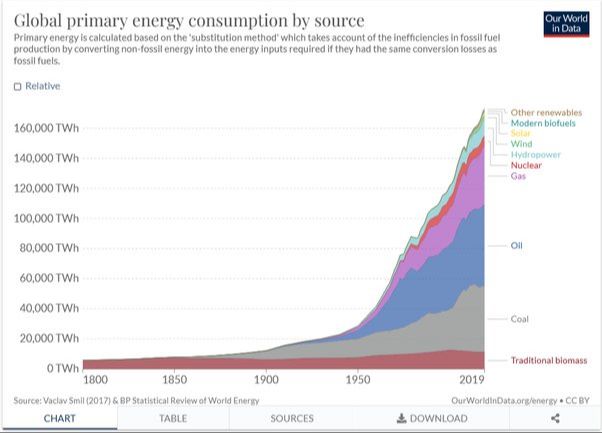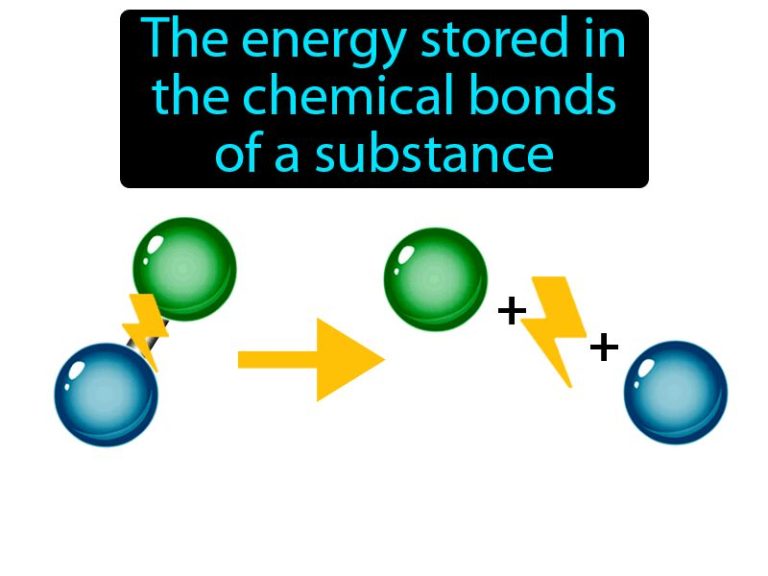How Far Have We Really Gotten With Alternative Energy?

With climate change accelerating and fossil fuel supplies dwindling, the world is seeking a major transition to cleaner renewable energy sources like solar, wind, hydropower and geothermal. Assessing our progress on this transition so far is crucial to understand if we are on track to meet climate and sustainability goals. Renewable energy has seen remarkable growth, but still accounts for a minority share of global energy use. Evaluating the current status, trends, opportunities and challenges will provide key insights on the road ahead to building a low-carbon energy future.
Growth of Renewables
In recent years, there has been significant growth in renewable energy capacity globally, especially from wind and solar power. According to the International Renewable Energy Agency (IRENA), total renewable power capacity worldwide increased from 2,501 GW in 2019 to 3,064 GW in 2021, with solar capacity increasing from 586 GW to 823 GW and wind capacity increasing from 622 GW to 837 GW over that period. In 2021, renewable energy sources accounted for over 80% of all new power generation capacity added worldwide, surpassing fossil fuels. (Source)
Much of the growth in renewable energy has been driven by rapidly declining costs. According to Lazard’s 2021 Levelized Cost of Energy Analysis, the cost to generate electricity from utility-scale solar photovoltaics declined by 90% from 2009 to 2021. The cost of onshore wind declined by 71% over the same period. As the costs of wind and solar power have become increasingly competitive with fossil fuels, more capacity has been added. (Source)
Declining Costs
The costs of renewable energy technologies like solar and wind have declined significantly in recent years. According to Solar Energy is the cheapest source of electricity in history, the cost of solar energy has dropped by over 90% in the last decade. The installed price of residential solar panel systems decreased by 39% between 2010 and 2020, falling from $6.20 per watt to $3.80 per watt.
Similar cost declines have been seen for wind energy. According to the U.S. Department of Energy, the cost of land-based wind power fell by around 71% between 2009 and 2020. Offshore wind also saw costs fall by around 29% in that time. These cost reductions for solar, wind and other renewables have made them cost-competitive with fossil fuel sources.
A key driver of the declining costs has been economies of scale. As solar and wind adoption increases exponentially, manufacturing expands and technology improves. This drives down costs through mass production and innovation. Government policy support has also helped drive deployment and scale.
Remaining Challenges
While renewable energy has seen impressive growth, several key challenges remain. Three major challenges are intermittency, storage, and transmission.
Intermittency refers to the variable or inconsistent nature of renewables like wind and solar. The sun doesn’t always shine and the wind doesn’t always blow, so these sources produce energy intermittently. This can make it difficult to integrate large amounts of renewable energy into the electric grid and reliably meet demand. Energy storage solutions like batteries can help match supply with demand, but are not yet widely adopted.
The intermittent nature of renewables also creates challenges for transmission. Fossil fuel plants are often located close to population centers, but areas with the most abundant wind and solar tend to be rural. New transmission lines are needed to connect these renewable energy sites to the grid. However, building transmission lines takes time and faces issues like public opposition and regulatory hurdles (As cited in IPCC, 2022).
While progress has been made, intermittency, storage, and transmission remain key obstacles to further adoption of renewable energy. But overcoming these challenges is vital to decarbonizing the electric grid and mitigating climate change.
Electrifying Transport
Electric vehicles (EVs) have seen rapid growth and adoption in recent years. According to EV adoption statistics, there were over 2.4 million battery EVs on U.S. roads as of November 2023, with leading adoption rates in California, Hawaii, Washington and Oregon (Source). However, EVs still only represent a small fraction of the total vehicles on the road. Significant challenges remain to achieve mass scale electrification of transport.
While costs have come down, EVs remain more expensive upfront than comparable gas vehicles. Range anxiety also persists, as EV charging infrastructure is still being built out. The grid will require major upgrades to handle large increases in electricity demand from EVs plugging in. Battery manufacturing and raw material supply chains need to expand enormously to produce the number of EV batteries required. These are just some of the challenges that must be addressed for EVs to fully replace gas-powered transport.
But the trend towards electrification appears irreversible, with most automakers now investing heavily in EV models. With continued policy support, infrastructure investment, advances in technology, and shifts in consumer preferences, EVs are expected to dominate new auto sales globally in the coming decades.
Decarbonizing Industry
Industry accounts for about 25% of global greenhouse gas emissions, with sectors like steel, chemicals, cement, and manufacturing representing major sources of emissions (1). Decarbonizing heavy industry is challenging due to the high temperatures required for many industrial processes, as well as the carbon released from chemical reactions.
Emerging solutions for decarbonizing industry focus on the following areas:
- Switching to renewable energy sources like wind and solar to power operations
- Improving energy efficiency through new technologies and optimized processes
- Electrifying operations where possible, such as using electric furnaces instead of fossil fuel-powered furnaces
- Utilizing hydrogen produced from renewable electricity instead of fossil fuel-based hydrogen to make steel, chemicals, and other products (Hydrogen Technology Solutions)
- Capturing carbon emissions and utilizing or storing them to prevent release into the atmosphere
While decarbonizing industry presents major challenges, emerging solutions like hydrogen, electrification, and carbon capture create pathways for reducing emissions from these hard-to-abate sectors.
Advancing Energy Efficiency
Energy efficiency improvements have played a major role in reducing energy demand across sectors globally. According to the International Energy Agency (IEA), after the impacts of the Covid-19 pandemic, energy efficiency trends are expected to return to their ten year average rate of improvement. However, they note that the rate of improvement needs to double in order to reach climate and sustainability goals. The IEA tracks efficiency trends across regions and notes progress in upgrading appliances, lighting, vehicles, and manufacturing processes. For example, between 2000-2018, global energy intensity fell by 1.6% per year on average as economies transitioned towards less energy intensive activities.
There are also notable energy efficiency gains being made in buildings. Smart building technologies and retrofitting existing buildings to be more efficient plays a major role. The Alliance to Save Energy identifies key trends advancing energy efficiency in 2023 like smart building controls and improving efficiency in affordable housing. Overall, energy efficiency represents the “low hanging fruit” in energy transitions but continued innovation, investment, and policy support is still needed to maximize energy savings across the global economy.
Policy Support
Government policies and regulations have played a major role in supporting the adoption of renewable energy sources. According to the Washington State Department of Commerce, clean energy policies often aim to incentivize or mandate the use of renewable energy through subsidies, tax credits, portfolio standards, and other mechanisms [1]. For example, renewable portfolio standards require electric utilities to source a minimum percentage of their electricity from renewables. Investment tax credits and production tax credits have also boosted solar and wind energy growth by lowering costs for producers and consumers. Going forward, continued policy support will be critical to overcoming persisting cost barriers for many renewables and transitioning more of the energy system.
Public Opinion
Public opinion polls show strong support for renewable energy in the U.S. In a 2017 survey, over 75% of respondents said increasing renewable energy is an important goal for the U.S. energy policy (Olson-Hazboun, 2017). Similarly, a 2019 Pew poll found that 77% of Americans favor expanding solar panel farms and 62% support more offshore wind farms (Pew Research Center, 2019).
There is also growing public concern about climate change, which is tied to support for renewables. A 2018 Yale poll found that nearly 70% of Americans believe climate change is happening and 57% say human activity contributes a lot (Yale Program on Climate Change Communication). According to Pew Research in 2020, 65% of U.S. adults say the federal government is doing too little to reduce the effects of climate change.
However, partisan divides still exist, with Democrats more supportive of climate action and transitioning to renewable energy compared to Republicans (Hamilton et al., 2019). Closing this gap in public opinion will be important for enabling ambitious policies to expand renewables and achieve emissions reductions.
Conclusion
In summary, significant progress has been made in advancing renewable energy over the past decade, but more work remains to fully transition away from fossil fuels. The costs of wind and solar power have declined dramatically, leading to rapid growth in adoption worldwide. Renewables are projected to account for over 90% of new electricity generation over the next 5 years. However, challenges persist in electrifying transport, decarbonizing industry, and advancing energy efficiency. While renewables comprise over 25% of global electricity generation today, fossil fuels still dominate the overall energy mix. Realizing a fully decarbonized energy system will require continued policy support, technological innovation, and public pressure. With concerted effort across sectors, a clean energy future looks increasingly within reach, but sustained commitment will be needed to get there.




